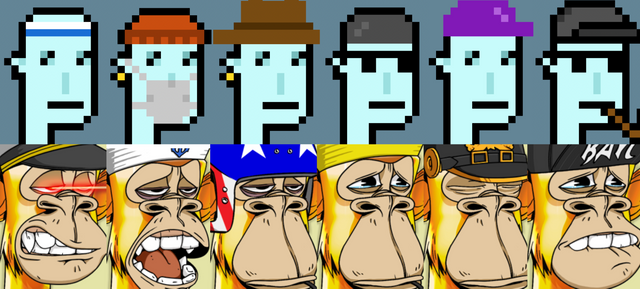NFT's Curiosity: To Mint, What is Minting?

Https://opensea.io
NFT's Curiosity: To Mint, What is Minting?The most curious ones in the #NFT world... What are minting, whitelist, gas fee and pre-sale?
As the popularity of the NFT world grows, the number of NFT investors is increasing and the unknown is encountered in this vast sea. NFTs go through phases such as creation, pre-sale and sale (pre-sale and public sale). The term "minting" for the NFT to be created appears in full on sale.
⬛Content Guide
⏬Possibilities on the Skeleton
⏬Whitelist Privilege and Gas Fee
⏬Possibilities on the Skeleton
To put it simply, the project developers of the NFT collections created create NFTs like skeletons. In addition to these skeletons, many traits (items, skins, etc.) are also available as meta data. Developers give percentages or thousandths to these traits, and NFTs begin to occur when users who will purchase make minting. In other words, NFTs are not ready without minting, they are waiting to be created in the system like a bare skeleton.
For example, suppose a teddy bear NFT collection is to be created. Let's assume that the developers determined 4 traits for these teddy bears. And these traits are ribbons of pink, red, blue and black. Developers define the probability of these traits to be entered into their contracts with pre-determined percentages or thousandths. For this example, the probabilities are 1% for pink, 10% for red, 30% for blue, and 59% for black. In the pre-sale, which is determined before the NFTs go on sale, when users start minting like a scratchcard, the teddy bear NFT starts to occur according to these probabilities, and the teddy bear owners with the least probable ribbons get the rarest NFTs. Therefore, the price value of the NFT that comes with the trait with the least drop probability is also the highest.
💥Whitelist Privilege and Gas Fee💥
Project owners determine a whitelist for the minting process in the pre-sale . In this whitelist, project owners can make a minting event with a pool of people created by filling out a certain form, if they wish, to their closest people. If desired, a public minting event can also be organized. In this event, users start the minting process and a collection begins to be created with the resulting NFTs. Before these transactions, it is necessary to connect the metamask wallet to the website of the relevant NFT vendor.
The most important thing to pay attention to here is the gas fee. gas feethat is, the transaction fee increases depending on the density in the network where the NFT collection is located, and if there is density in the relevant network during the mint activity, the gas fee also increases accordingly, and perhaps it may cause a gas fee payment more than the value of the NFT. This situation is called gas war, and in order to prevent this gas war from occurring, project owners generally prefer to do the minting process with a certain whitelist, that is, a determined pool of people. Users who have the opportunity to mint in this list of privileges get the relevant NFTs at a more affordable price before the collection goes on public sale, which is called public sale. Thus, users on the whitelist can keep the NFTs they mint and create as investments, or sell them at better prices when the sales start on the public sale.
After the NFTs are minted, users can compare the values of the traits by looking at the properties of the NFTs they have and can determine the value for their NFT accordingly.